In the first year of my yoga self-practice at home there have been many times where I made practicing yoga more complicated than it needed to be. Having too high expectations of myself or self-sabotaged to a point where I would avoid stepping on the mat and forget why I even started a yoga self-practice in the first place.
I still have times where I fall back into some of these unhelpful patterns but being able to recognize them early on helps me avoid the most of it. It helps me to quickly remember my intention for even practicing yoga in the first place and find my way back to a fulfilling yoga practice again.
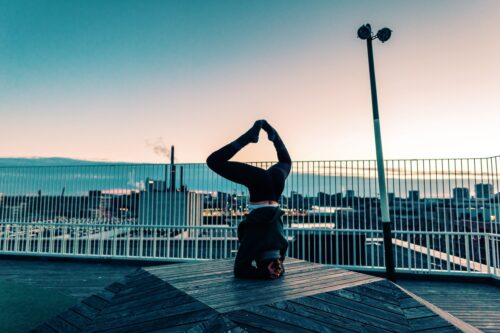
Want a fulfilling yoga self-practice at home but unsure where to even start?
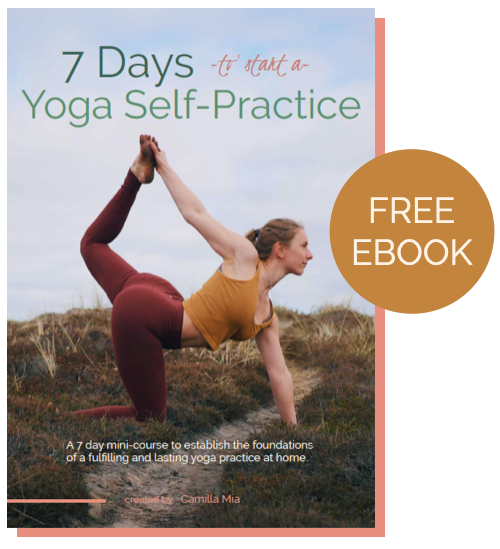
Get the mini-course 7 Days to Start a Yoga Self-Practice to establish a lasting and inspiring independent yoga practice at home!
In 7 days and 7 challenges, the mini-course takes you through how to establish a yoga self-practice step-by-step.
Confusing joyful, impactful, empowering with “perfect”
Here’s the thing: there’s a huge difference between a joyful, empowering, and impactful yoga practice and a perfect, never-challenging, never-hard yoga practice. The first one is oh so possible, the second one never will be.
Accepting that your yoga practice will always have challenges along the way, injuries might cause setbacks in your physical practice, the other aspects of your life might at times leave you with no time or energy left for your yoga practice, you might fall into the comparison trap, and most of us will probably experience times where we feel uninspired or unmotivated when we step on the mat in our yoga self-practice.
Showing up for yourself on the mat because you know it aids you in living a wholehearted, intentional life is no easy feat sometimes. Knowing that it’s all about how we approach our practice is the pathway to cultivating a fulfilling yoga practice along the way.
When we’re waiting for things to be perfect, we may actually miss how joyful things are right here exactly where we are.
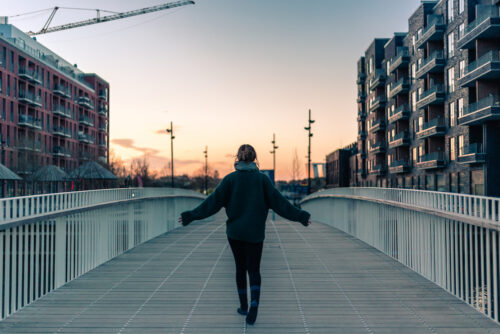
Allowing the fear of change to hold you back
Sometimes it feels easier to stay stuck than it is to take a risk and make some changes. If your yoga self-practice is a little overwhelming, unfulfilling, and uninspiring right now, that may still feel more comfortable than making some bold and brave decisions towards the possibility of facing new challenges and evolving in your practice.
But the truth is this: the first step to choosing more for ourselves is opening ourselves up to the fact that although change is scary, it’s the only way to bridge the gap between where we are now and where we truly want to be.
So dare yourself to go to that yoga class you secretly want to join but tell yourself you’re not good enough for. Dare to change the way you practice every once in a while if you feel like you’re stuck. Step out of your comfort zone so you can grow, evolve, and make amazing things happen in your life
Try out new yoga teachers, new styles of yoga, new and challenging poses or transitions, pranayama exercises, mudras, mantras, meditations, or journal and self-reflect. Yoga is an 8 limbed path and there are so aspects of the yoga practice for you to dive into and grow from if you have the courage to try.
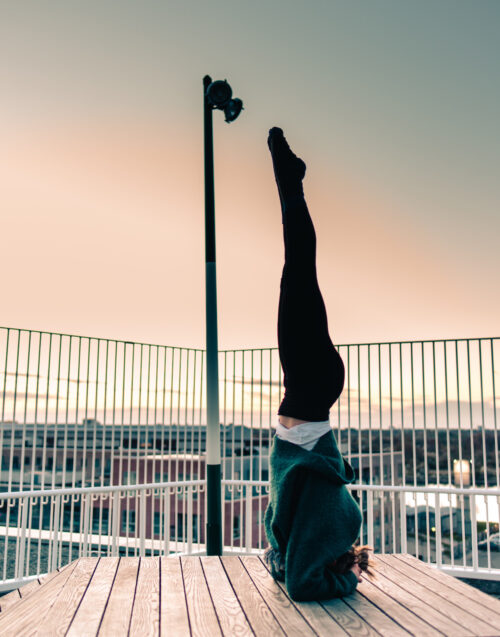
Losing motivation if change is going to take a while
Your body and your mind are incredibly complex – lots of things need to happen to deepen our practice on a physical, mental, and emotional level. I believe that it is always possible to make a positive change if we’re feeling unfulfilled when it comes to our yoga self-practice (and our life), but I know without a doubt that change may take a while to happen too.
Especially if you need to discover, evolve, or change some core elements of your practice to feel more aligned, capable, and joyful in your practice and your life. This is rarely something that can happen overnight as there’s the current state of your body and mind here and now to honor (and pushing ourselves too far mentally or physically won’t get us closer to where we want to be).
In my own journey, it took me 6 months from starting my (almost) daily yoga self-practice to even notice the tiniest bit of improvement in my mindset and my physical yoga practice. Our bodies need time to adapt, and our minds too. If I hadn’t taken yoga photos from the start of my yoga practice I would have forgotten how far I’d already come after those first few months. Even now, 3 years since starting my self-practice, I’m still continuously making changes, I’m constantly evolving my practice in big and small ways when my intuition guides me to. I still have days where I’m impatient and unmotivated because I feel like I’m not growing fast enough.
Change isn’t easy, or a quick fix solution, but it’s oh so worth it when we see it through and stay committed to our bigger vision for our yoga practice and our life.

Not giving yourself permission to cultivate and create the yoga self-practice you really want to be doing
Another battle I see my students (and myself) struggle with is giving themselves permission to actually practice in the way that they want to practice. We can feel so much pressure to practice a certain way because it sometimes feels like there’s only one “right” way to do it. That we should be practicing a certain amount of time when we step on the mat or that we need to practice at a certain intensity for it to “count”.
The truth is we don’t need permission to practice in a way that fulfills us. We have to take the opinions of others off the table and remember that we don’t need anyone’s permission to change and build a meaningful life for ourselves but our own. And the people who matter? They’ll root for you every step of the way.
The more we allow our practice to be a place without all the ‘should dos’ the more joy and freedom we will feel whenever we step on the mat. The more we allow our yoga self-practice to follow the natural ebbs and flows in our energy, mood, and life overall, the more we can let go of expectations that don’t serve us and instead let our desires and intuition lead the way.

Not being brave enough to honour your boundaries
When we find ourselves feeling stressed, overwhelmed, and unfulfilled in our yoga practice, so much of that can be rooted in the lack of healthy boundaries that we’ve put in place along the way. Once we discover, explore, and outline what our boundaries are, we may still struggle to honour them as we go.
We fear that we will never make changes if we don’t push ourselves hard in our yoga practice. We’re afraid that we’re not practicing ‘hard’ enough if it doesn’t feel like an uphill battle to step onto the mat. We tend to listen to the yoga teachers words over our own intuition – even if a pose feels painful or pinching.
Or our lack of boundary setting might show up outside of our yoga practice. That we’re not setting boundaries when it comes to the time and energy spent at work or on other people leaving us with nothing left to prioritize and take care of ourselves and make time for our yoga practice.
The truth is – by honouring our own boundaries, we can achieve amazing things, we can feel better in our yoga practice, avoid pushing ourselves until we no longer find enjoy in it, and empower ourselves to prioritize our own wellbeing and trust our intuition every step of the way.
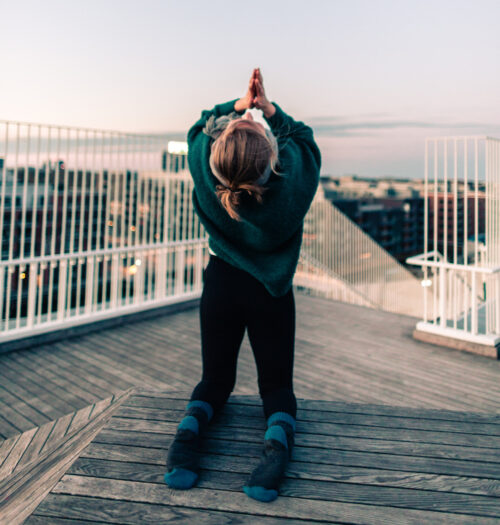
Comparing your joyful yoga practice to someone else’s
We all know that comparison is the thief of joy, and that couldn’t be more true when it comes to cultivating a joyful regular yoga self-practice. Once you discover what a joyful, empowering, and fulfilling yoga practice looks like for you, and how you can make it possible in your routine, you can start to veer off track when you hear how others define their joyful practice along the way.
Maybe your fulfilling yoga practice right now looks like taking a few evening yoga classes throughout the week so you can fit your yoga practice in alongside some big life responsibilities too – and you’re at peace with this because it’s a trade off that helps you to prioritise everything that’s important to you right now. But then you see on social media a yogi whose practice you admire talking about how they never ever practice in the evening because that’s their time to spend with loved ones, and you start to feel like you’re doing it all wrong and that they’re doing this whole “fulfilling yoga practice” thing better than you are.
Or perhaps it seems like everyone else has time to do a vigorous 60-90 minute practice every day and that you’re the only one who skips days in your practice or the only one who does short, less intense practice sessions some/most days (trust me, you’re not the only one!).
Whether the examples resonate with you, or it manifests for you in a different way, the truth is that our fulfilling yoga practice is going to look wildly different to other peoples at different stages in our lives. We’re all navigating the different seasons of our lives, and the only way to stay truly connected to our own joy and fulfillment is to stop worrying so much about what other people are doing and always remind ourselves that we are exactly where we need to be right now.
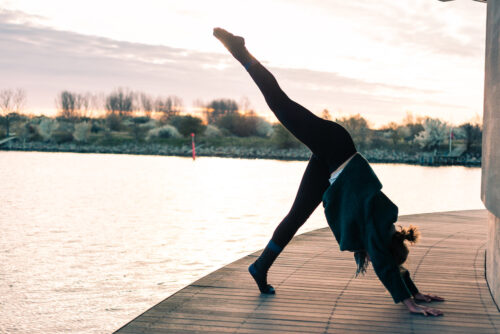
Losing perspective and practicing the “wrong” things
One of the biggest things that stops us from getting fulfillment out of our yoga practice is losing perspective of our priorities in our practice and working on the “non-essentials” instead. We can get caught up in a pattern of wanting to progress so quickly that we skip over the foundations and end up struggling more than necessary or even risking to injure ourselves. We can also end up in a pattern of holding on so tightly to what’s familiar and comfortable that we never allow ourselves to grow.
This is why returning to our intention for our practice time and again makes such a difference – because it anchors us along the way so we can’t be distracted by the things that don’t truly matter.
We practice yoga intuitively by staying focused on what really matters to us in our yoga practice in the current season we’re in, and when outside sources or non-essentials start to dictate how we practice instead that’s when we start to lose our way. Set yourself an intention for your yoga practice in every season you’re in and go back to it time and time again whenever you start to lose perspective as you go.
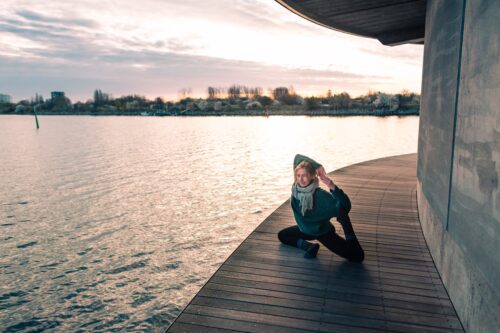
Struggling to stay flexible as you navigate everyday life.
Even with all the intuitive and intentional planning in the world, unexpected situations are going to crop up from time to time. Whether it’s a personal or family emergency, or extra demanding times at work/school, it’s essential we stay flexible along the way.
That means being flexible with the time of day and amount of time we dedicate to our yoga practice too. If we’re only practicing when we have a full hour to dedicate for our practice, then we prevent the possibility of making space for a shorter yoga practice on our most busy days where we would have benefitted from practicing the most.
What can happen is that if we over plan, we don’t give ourselves enough space to be flexible as we navigate our week. This is where margin comes in handy – by giving ourselves breathing room in our daily routines and by not over scheduling ourselves, we’ll be able to roll with the punches much easier along the way.
Unexpected situations are always going to pop up, and they can trigger a whole lot of stress and overwhelm if we let it. Especially if it’s a negative reason why we have to be flexible, we can start to wish that this never happened to us, but if we reframe our mindset and accept that this is what is happening and do the best we can, we remind ourselves we’re oh so capable of dealing with it along the way.

Decision fatique
We are only capable of so much decision making throughout each day – our brain is not an endless supply of energy and focus. If we don’t honour our limited supply of decision making ability, we can start to feel stressed, overwhelmed, and unmotivated along the way. We also will have different amounts of energy available to us in different seasons of our lives too – if for example we’re battling with a health problem or navigating a family crisis, we will naturally have less focus to give our yoga practice in that time.
Limiting the amount of decisions you need to make each day, laying out your yoga clothes the day before, picking a guided yoga practice to do in advance, and showing yourself grace when you’re running on empty is what I encourage you to do along the way if you’re struggling with decision fatigue in your daily routine right now.
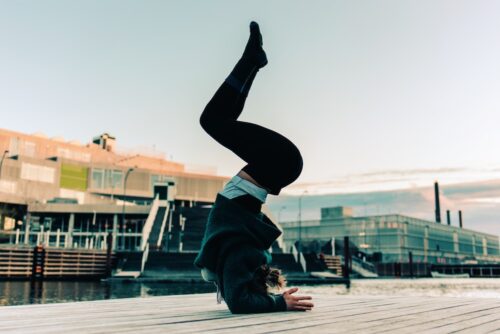
Some thoughts to finish
If you’re currently battling with any of these mindsets, fears, and limiting beliefs, I hope this post can be a jumping off point for you to move past them and create a regular yoga practice that is joyful and fulfilling for you along the way.

